ORGANIC ACIDS: DO NOT UNDERESTIMATE THIS ELEMENTS
ORGANIC ACIDS IN GREEN GRASS
Organic acids are one of the natural components of green grass, along with sugars, proteins, various fractions of fiber, water, and minerals. They are present in green forages in percentages ranging from 4 to 15% of dry matter and can be divided into carboxylic acids (formic, acetic, propionic, butyric, etc.) and dicarboxylic acids (fumaric, maleic, etc.). Organic acids are classified as non-structural carbohydrates and are measured in milligrams per kilogram. They have a high rate of degradation (20-30% per hour), so it becomes crucial to adopt the right techniques for forage preservation to maintain their original qualities. Table 1 shows the content of some organic acids present in different crops (% on an “as is” basis). The acids mentioned in the table are the most commonly represented and considered of greater interest in ruminant diets due to their functions; however, there are numerous types of organic acids that modern studies are showing to have significant benefits in the rumen and intestines.
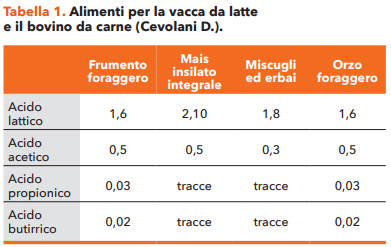
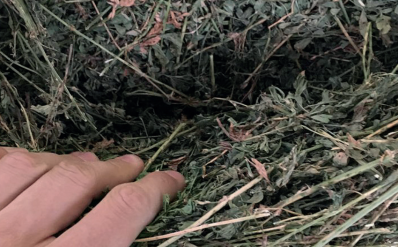
LOSSES DURING HAYMAKING AND SILAGE
The need to produce forages that are available year-round for animal feeding has led to the development of food preservation techniques such as haymaking and silage. Unfortunately, the typical characteristics of green grass are partially lost in these processes. Table 2 shows the variations in organic acid content (g/kg) following the ensiling of crops harvested at two different stages of maturity. Even in haymaking, where significant progress has been made in mechanizing the process to make it more efficient over the years, similar issues arise regarding acid losses, especially if the timing of all phases is not properly respected. Table 3 shows the variations in organic acid content in alfalfa during haymaking.
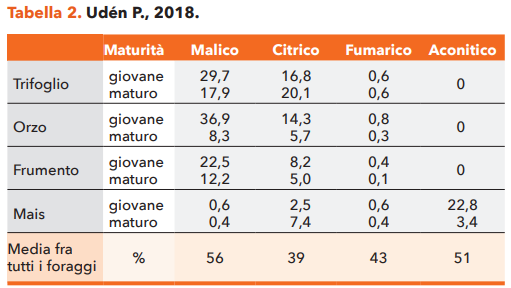
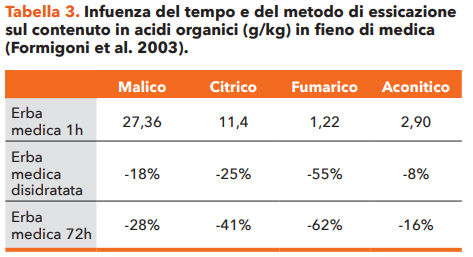
FUNCTION OF ORGANIC ACIDS IN THE RUMEN
In ruminant nutrition, organic acids perform several functions including:
- Energetic function
- Regulation of volatile fatty acid (VFA) production
- Regulation of microbial flora
Organic acids play an important role in the energy metabolism of the rumen microbial flora. In a 2020 study by Gheller et al., the effects of supplementation of formic and propionic acid in the diet of a group of Holstein cows were observed, both in liquid form (4 ml/kg) and solid form (4 g/kg). The treated group showed increased feed intake of almost one kilogram per head per day, resulting in increased corrected milk yield for fat and protein, and an increase in rumen fluid pH. Another observed effect that should not be underestimated was that, thanks to this supplementation, the temperature of the diet did not increase over a 24-hour period. The utility of organic acid supplementation is even more evident when animals are subjected to a period of stress, such as during hot weather. In a study conducted by Ali A., et al. (2012), the effects of adding different percentages of organic acids (citric, phosphoric, lactic) to lactating cows, administered in drinking water for thirty days during the month of August, were observed. Cows in the treated group showed significantly higher feed intake and increased milk production compared to the control group; furthermore, an increase in fat, protein, and lactose, and a reduction in somatic cell counts (SCC) were recorded. Similarly encouraging results were obtained in a more recent study in 2022 by Fontoura A. B. P. et al., where forty-six multiparous Holstein cows subjected to heat stress were supplemented with a mix of organic acids (25% citric acid and 16.7% sorbic acid) and essential oils (1.7% thymol and 1% vanillin) in microencapsulated form for fourteen days. The effects on the treated group were increased dry matter intake (+1.4 kg of dry matter per day) resulting in improved nitrogen efficiency and better yields (+2.8 kg/d energy-corrected milk; +2.5 kg/d fat-corrected milk).
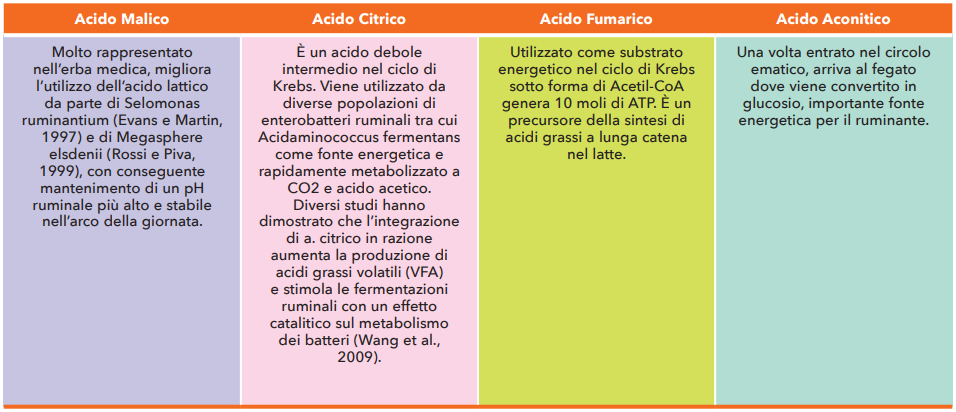
HOW TO INCORPORATE ORGANIC ACIDS INTO THE DIET?
The losses naturally incurred during forage transformation and the scientific evidence demonstrating the numerous benefits of organic acids in the rumen lead us to wonder how to effectively incorporate these natural components of green grass into the diet. The main challenge lies in the management aspect, as uniformly distributing very small quantities (grams) within a total mixed ration is not easy at all. A good solution comes from Sugar Plus, which, thanks to its experience in handling liquid raw materials, has been able to develop liquid feeds that already contain perfectly blended organic acids. Liquid feeds indeed have many mechanical and physiological benefits on both the ration and the rumen, due to the contribution of various sources of sugars combined with different pools of organic acids. In a study conducted in vitro in collaboration with the University of Bologna in 2020 (in press), the effects on NDF digestibility were observed in rations supplemented with molasses or Sugar Plus liquid feeds (sugars and organic acids) compared to a conventional control ration. At 24 hours, the digestibility of the ration containing liquid feed had increased by over 25% compared to the one containing only molasses, which showed an increase of 10%. The synergy between sugars that nourish cellulolytic bacteria and organic acids that participate in the energy cycle of bacteria directs the rumen towards improved efficiency and better utilization of nutrients present in the ration.
CONCLUSIONS
Starting from the grazing diet and the chemical composition of green grass, we understand that in order to have animals that are as efficient as possible, we need to provide the nutrients that cows naturally ingest from grazing, also in the feed trough. Today, where sustainability has become a predominant issue in the livestock sector, and ruminants are largely implicated in methane and carbon dioxide emissions, it is important to consider the functioning of all mechanisms within the rumen from a 360-degree perspective and try to steer them towards greater energy efficiency. The use of organic acids in the diet can improve dry matter intake, milk production, and milk quality, as evidenced by the studies reported. Specifically, the interaction of organic acids with sugars that are part of liquid feeds becomes an important ally for ruminal well-being and efficiency.
Tratto da Ex Dairy Press N. 02 – 2023
